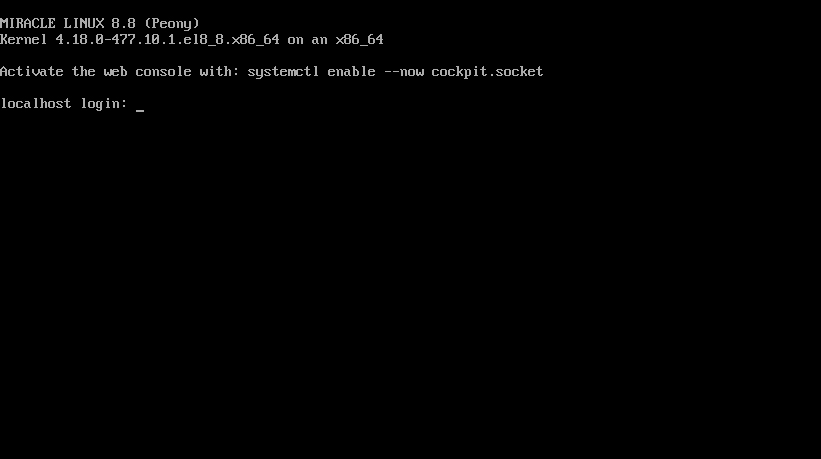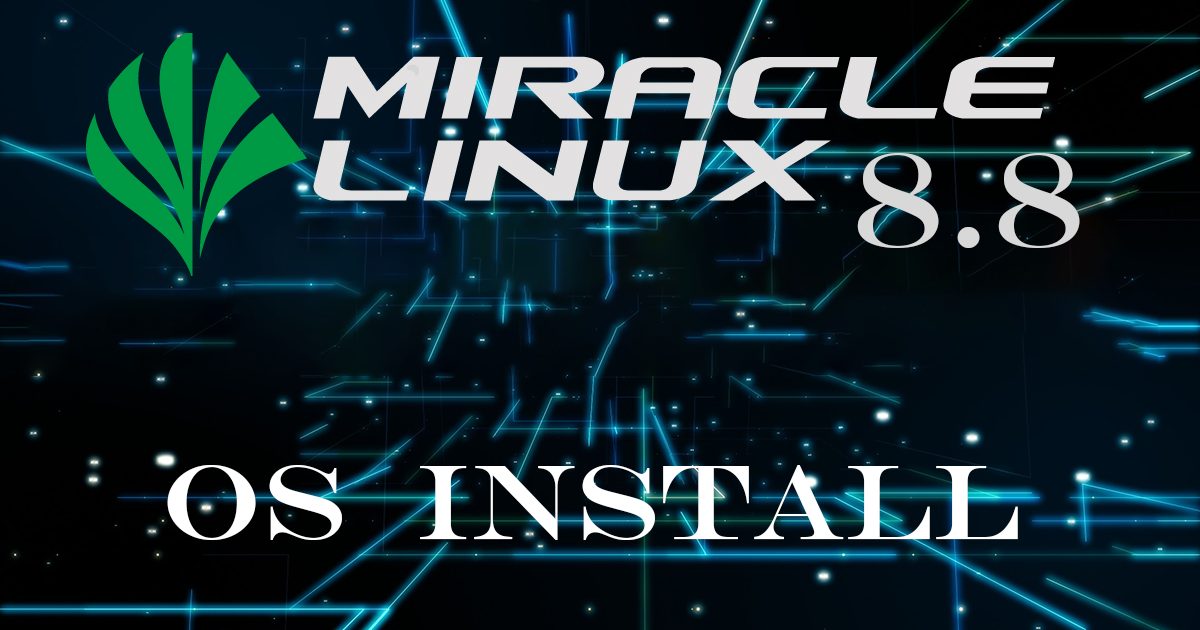MiracleLinux
MIRACLE LINUX is a Japanese Linux distribution provided by Cybertrust Corporation.
Development was started by Miracle Linux (now Cybertrust), a company established by Oracle Japan and NEC in June 2000 to ensure stable operation of the Oracle Database for business to enterprise use.
It has been built as a RHEL base since Version 2.0 released in May 2001, and as a complete RHEL clone since Version 6.0 released in January 2012.
The latest version is 8.8, released on October 05, 2023, but can be installed just like 8.4.
MIRACLE LINUX, a well-known domestic RHEL clone, was initially a commercial OS with a paid license, but following the demise of CnetOS8, it was announced that it would be offered free of charge starting with the latest 8.4 version. Therefore, this OS is currently in the limelight as a candidate for migration from CentOS8.
MiracleLinux8.8 ; Download
MiracleLinux ISO image files can be obtained from the following official web sites
https://www.miraclelinux.com/
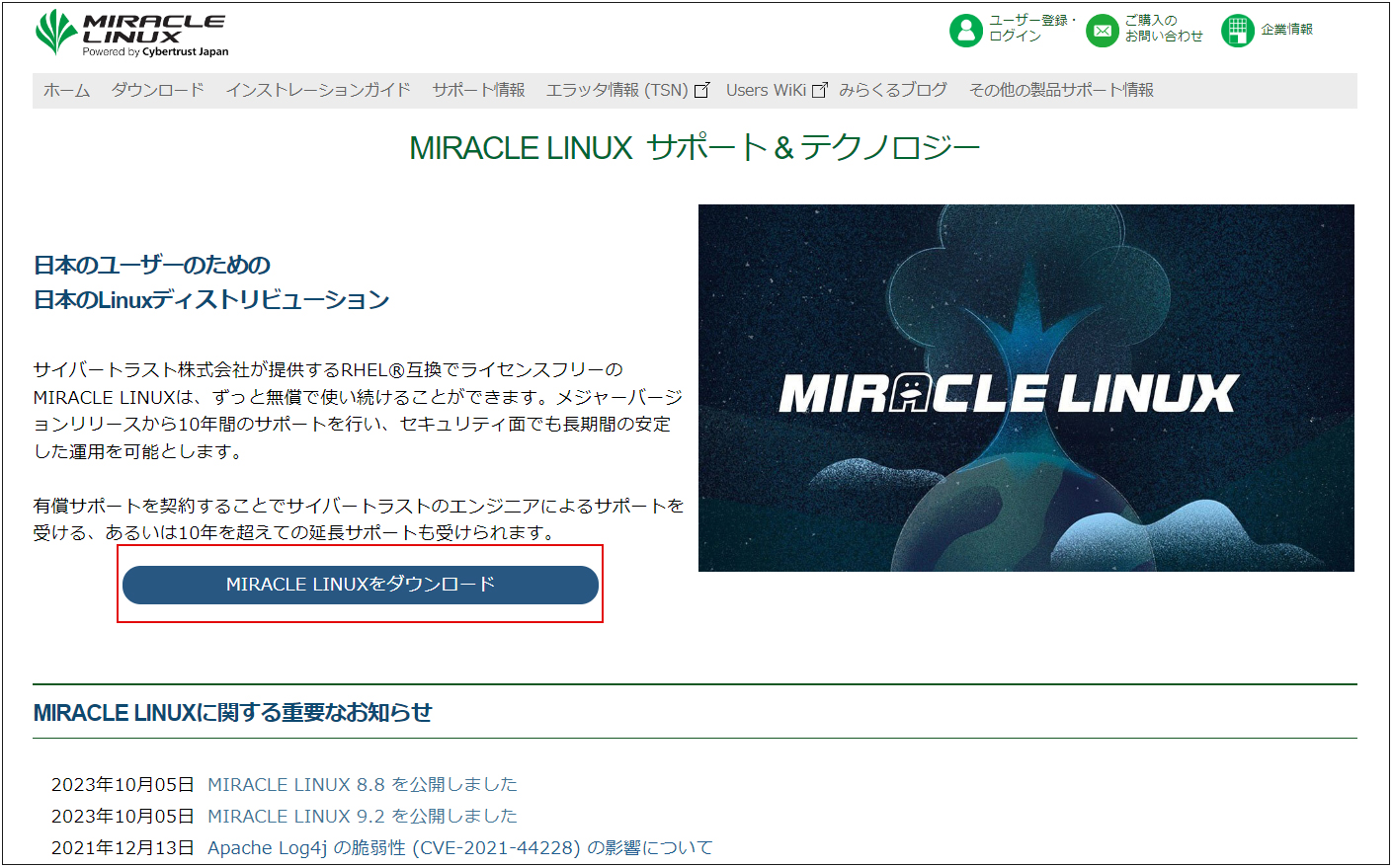
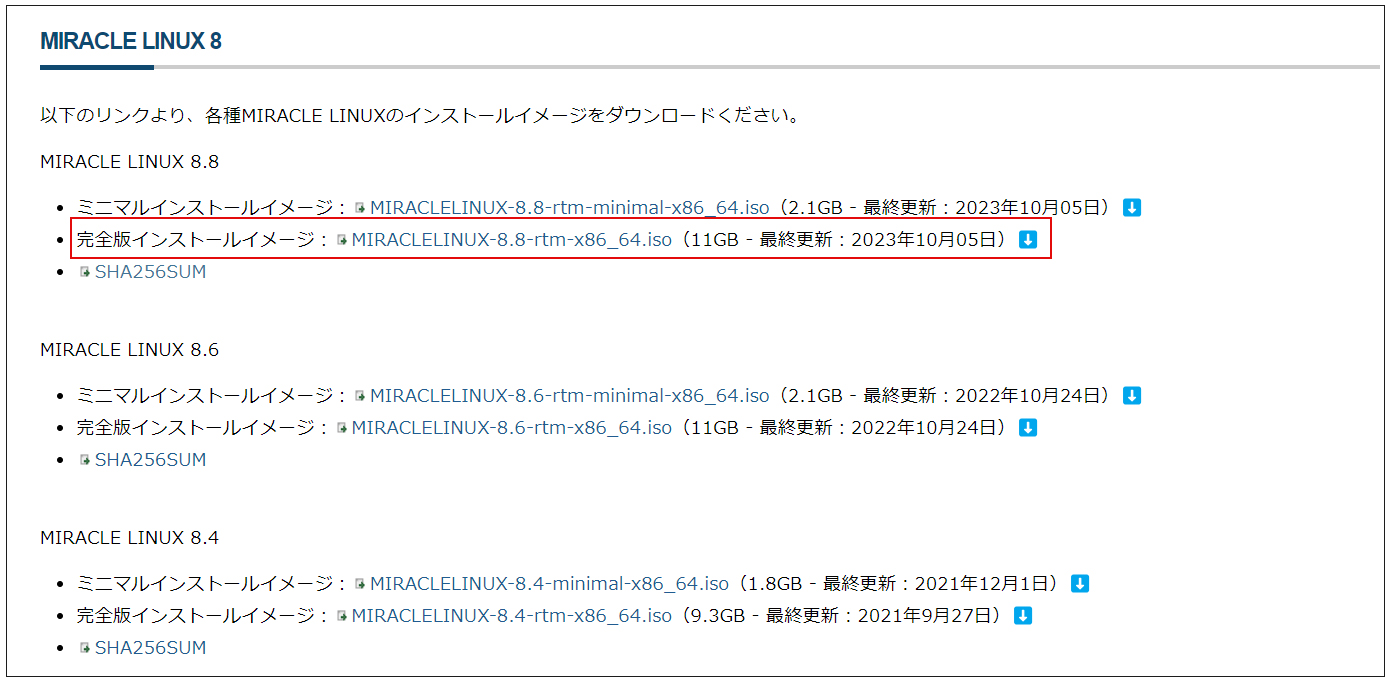
MiracleLinux 8.8 ; Install
Download "MIRACLELINUX-8.8-rtm-x86_64.iso", create an installation disc on a USB disk and install it on the actual device, or create a virtual machine using Vmware player or VirtualBox and install it.
①Boot the installation disk.
You will be at the MIRACLE LINUX 8.8 installation screen, press the "tab" key to change the screen resolution, etc.
Add "inst.resolution=1024x768" and press "Enter" to use the right edge of the installation screen without interruption.
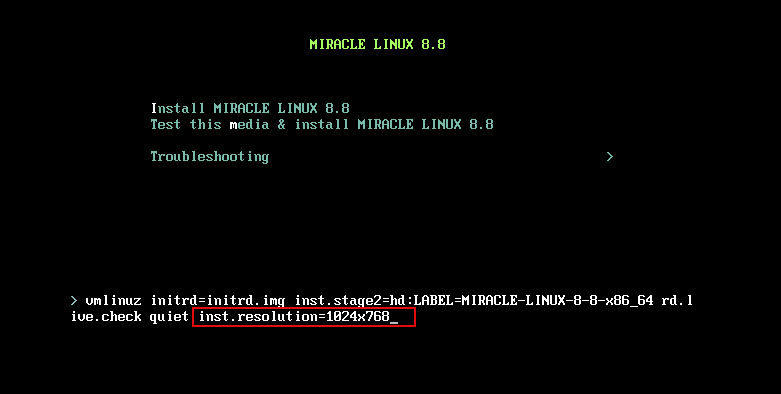
➁In the language selection screen, select the default "English".
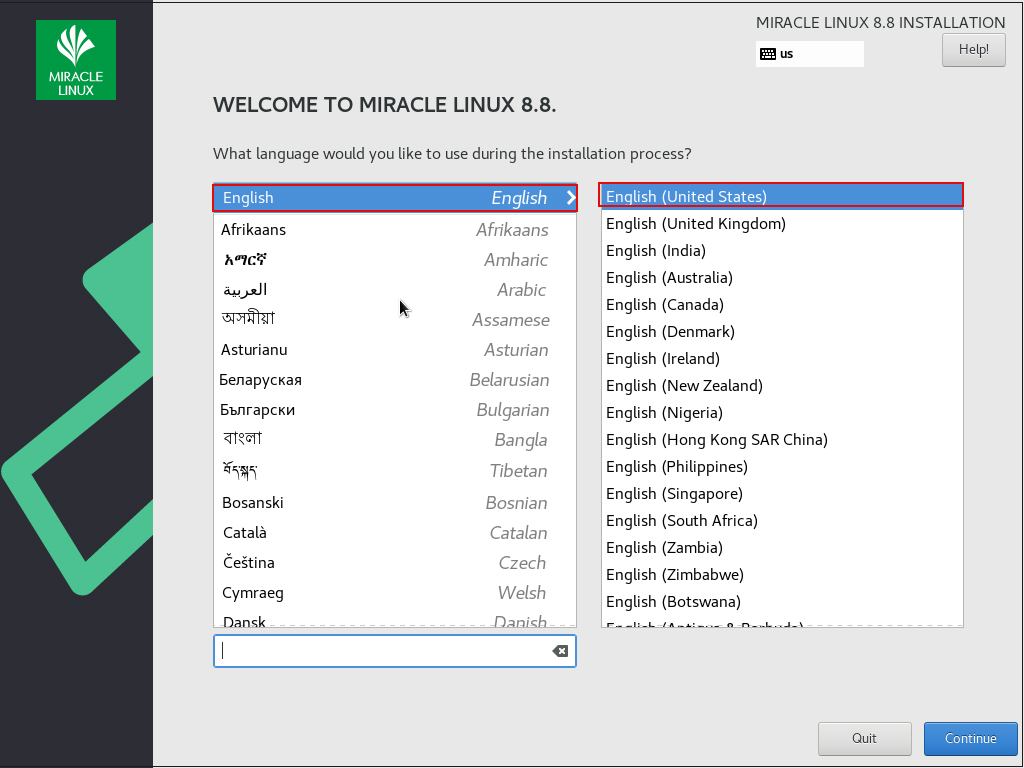
➂Select Keyboard Layout" Click [Keyboard]
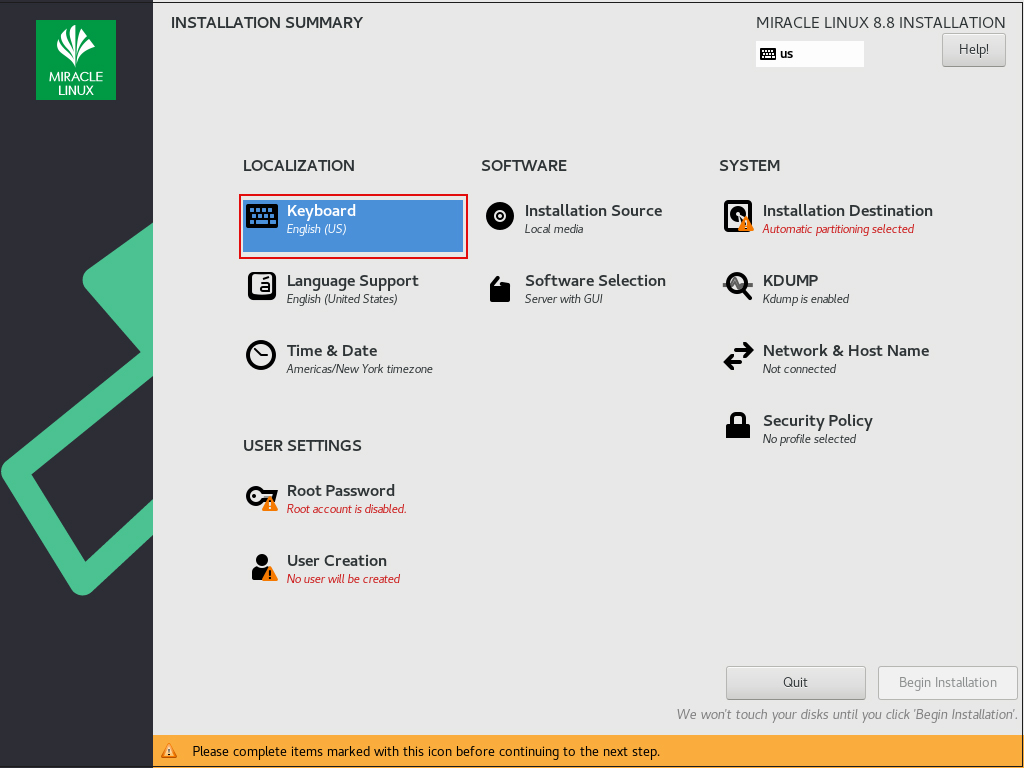
Click on [+]
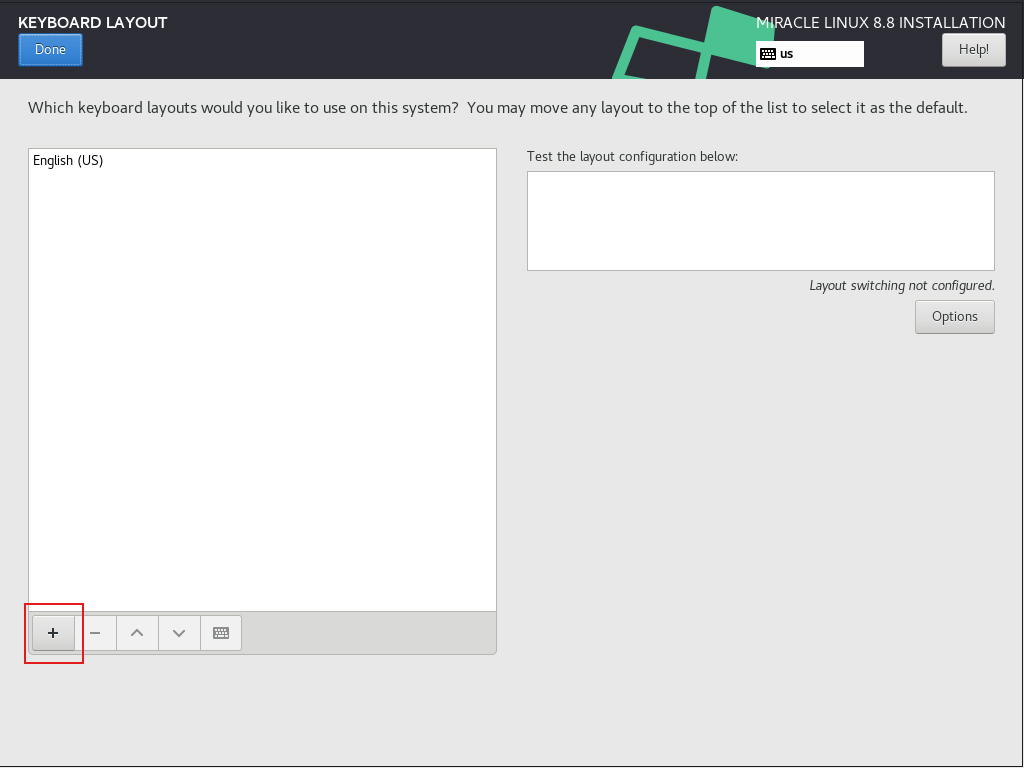
Select "Japanese" and click "Add"
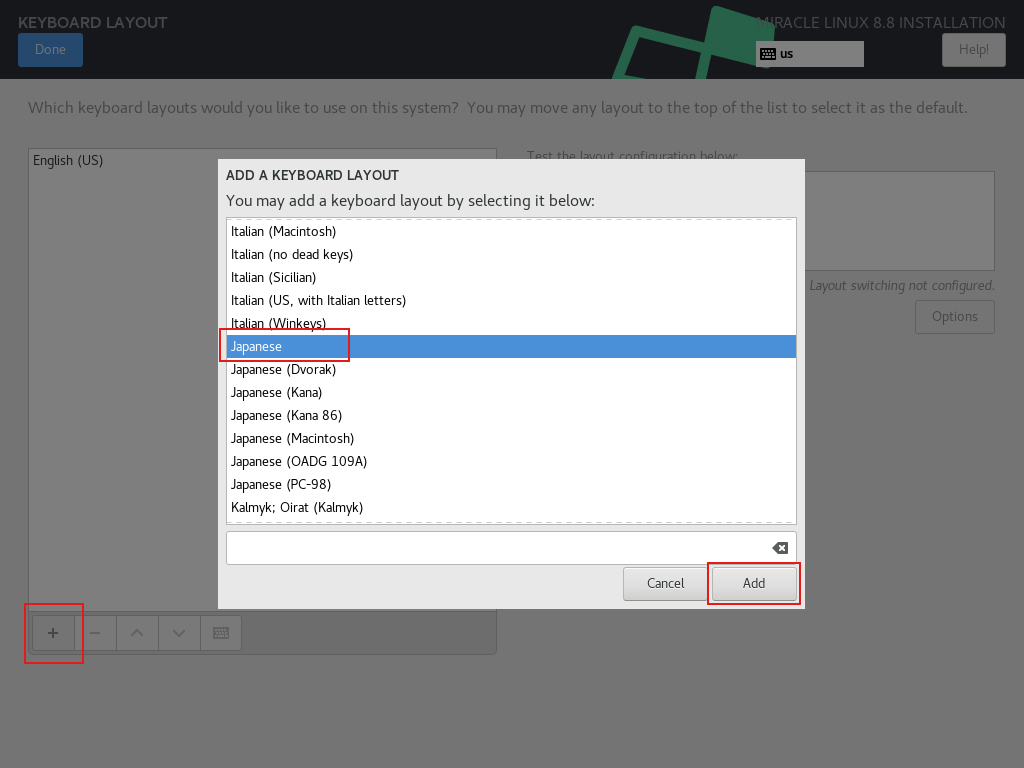
Select "Japanese" and click [^]
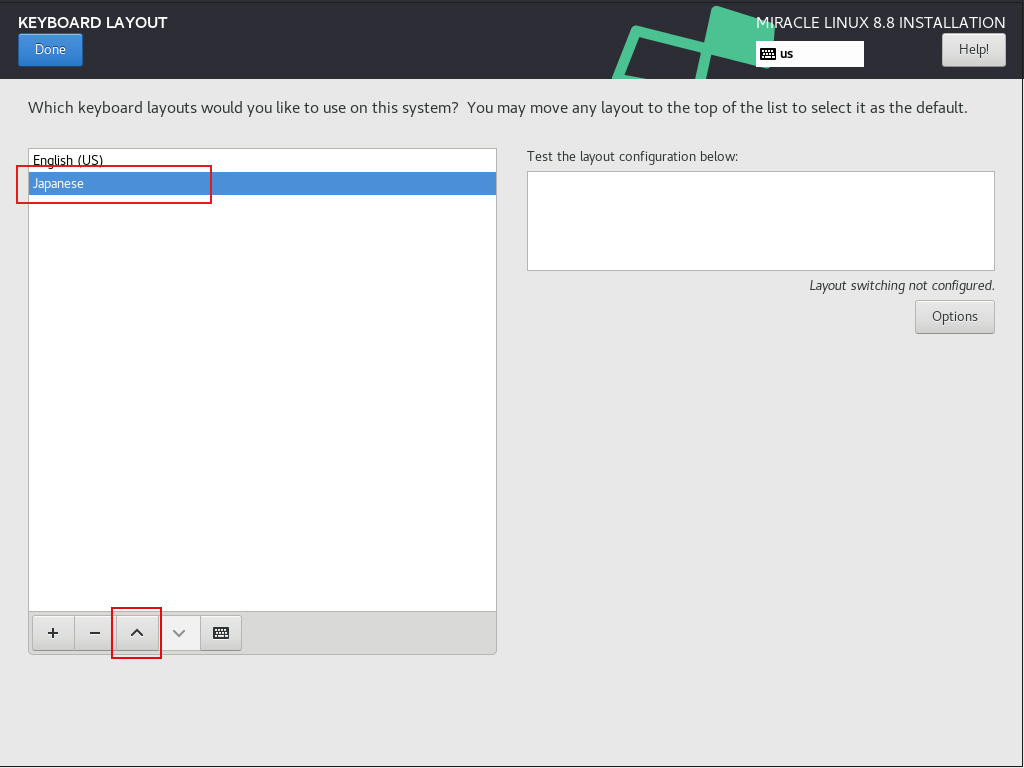
Click [Done]
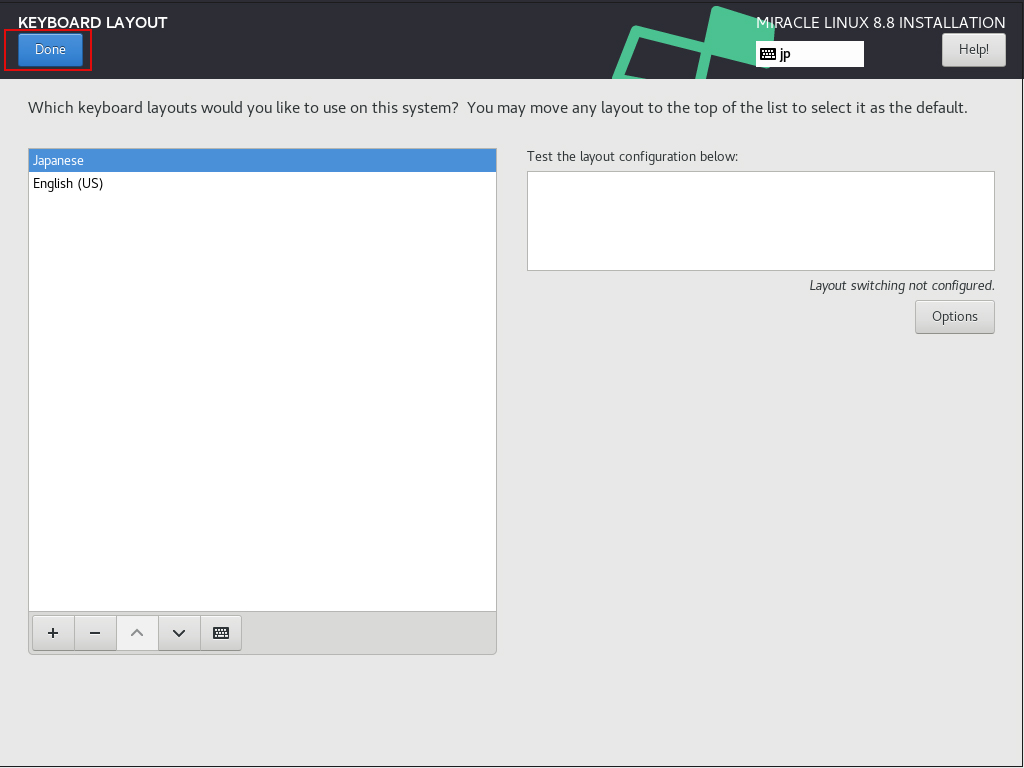
④Network & Host Name" setting
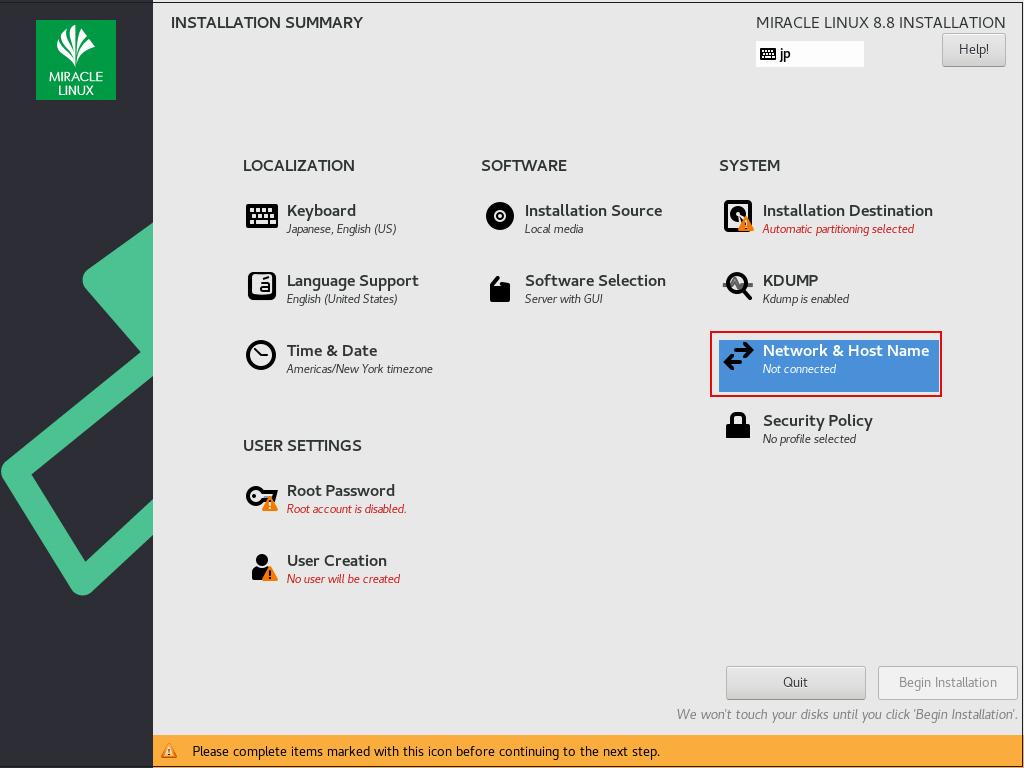
Turn "ON" in the upper right corner, otherwise proceed with DHCP enabled by default.
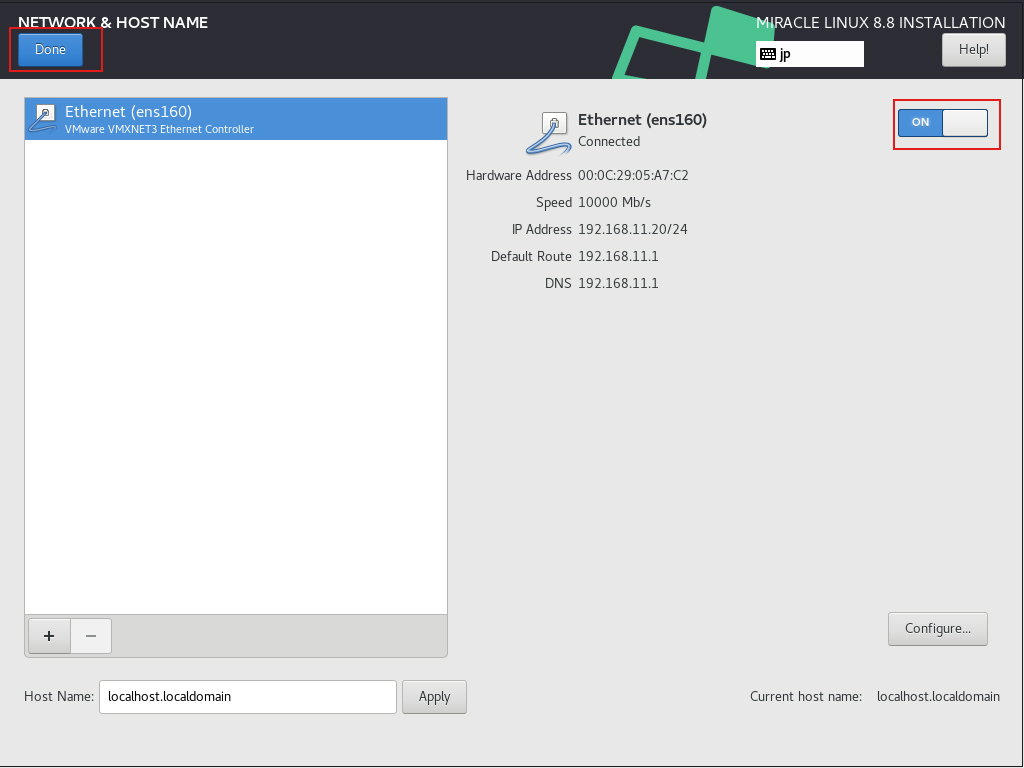
⑤Date and Time Settings
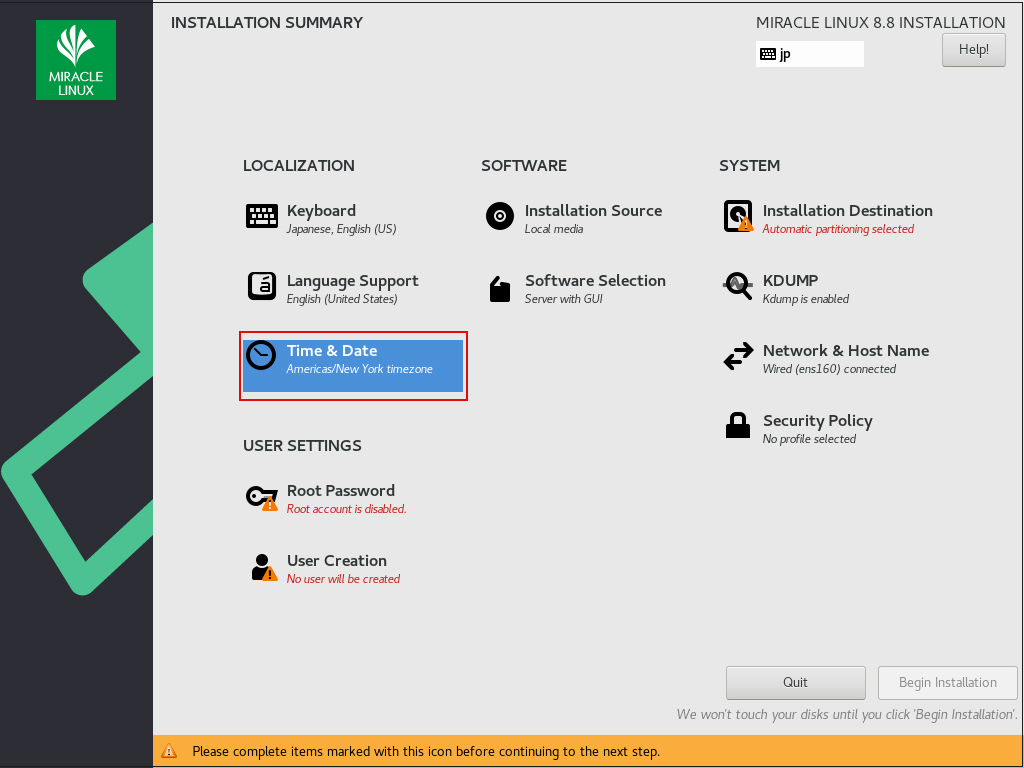
Set "Region" to "Asia" and "City" to "Tokyo".
Set "Network Time" to "ON" and click [Done]
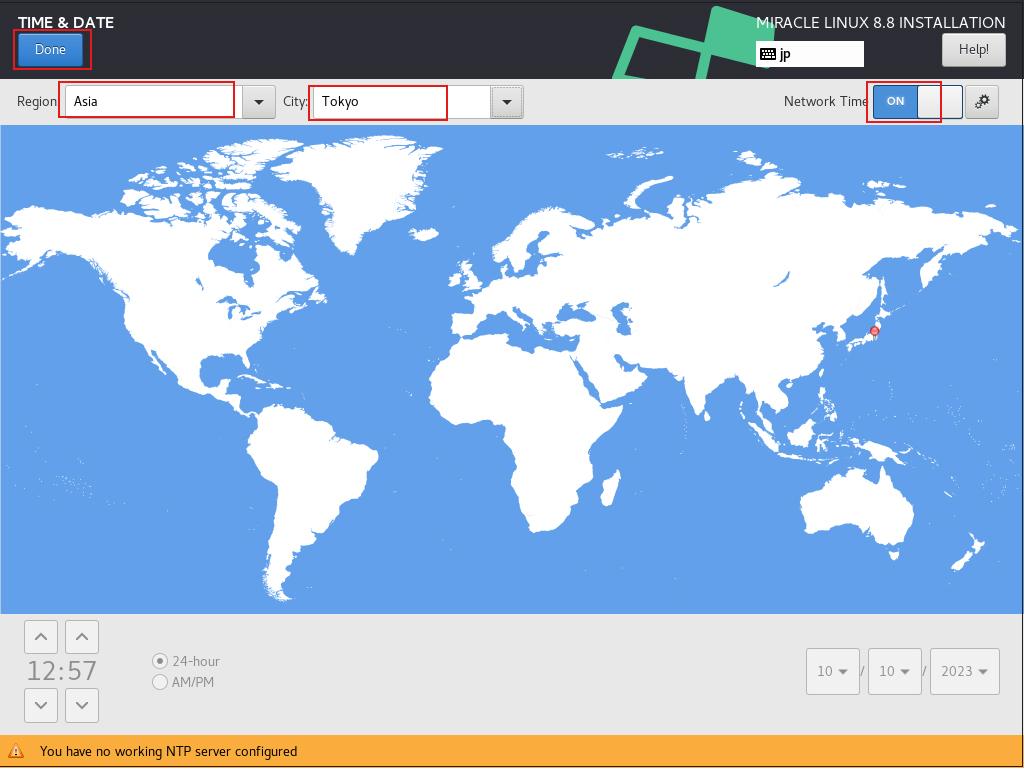
⑥Click on "Software Selection"
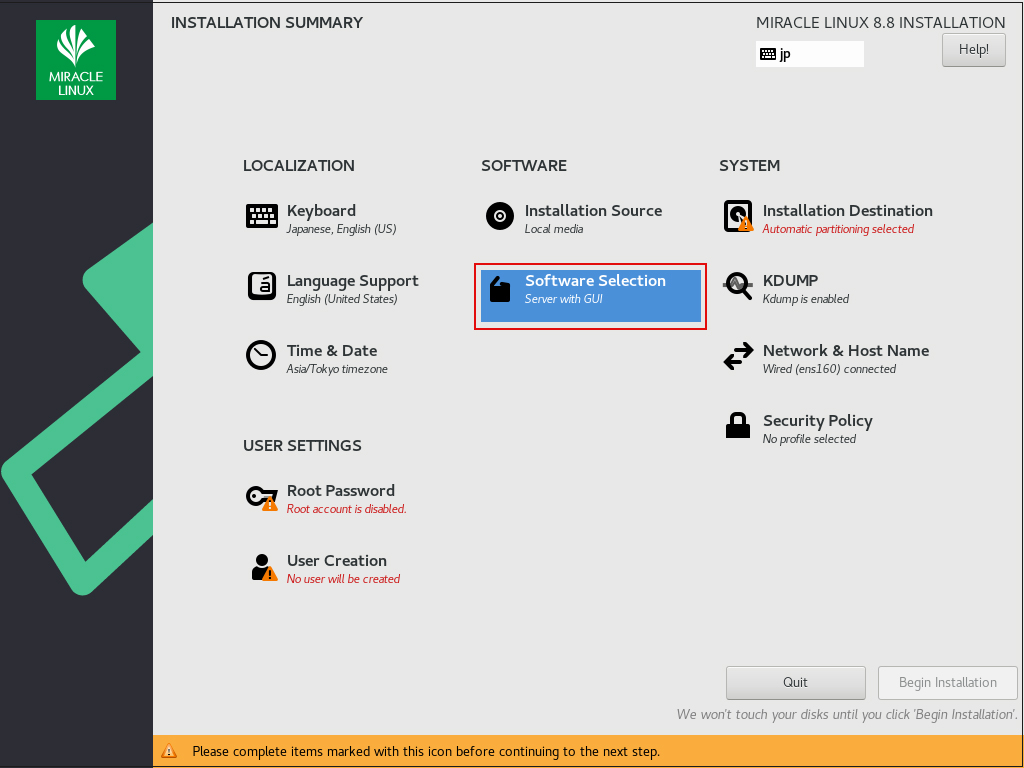
For "Base Environment" select "Server" and for "Software" select the following in the right column
①Hardware Monitoring Utilities
②Performance Tools
③Legacy UNIX Compatibility
④Development Tools
⑤RPM Development Tools
⑥Security Tools
⑦System Tools
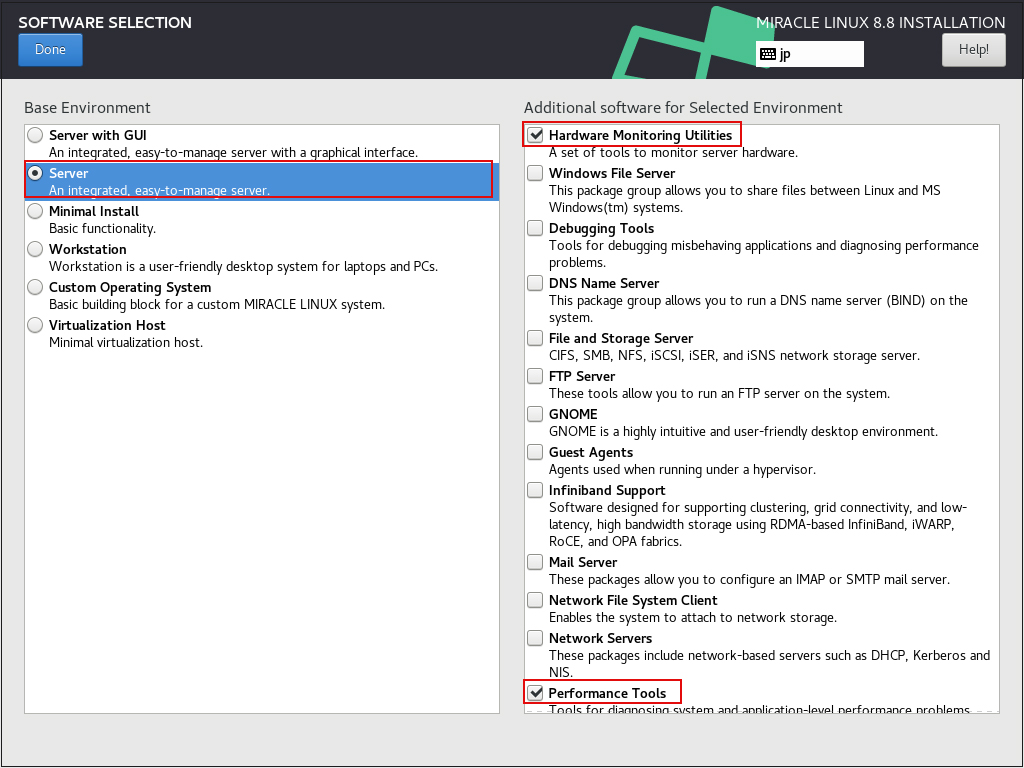
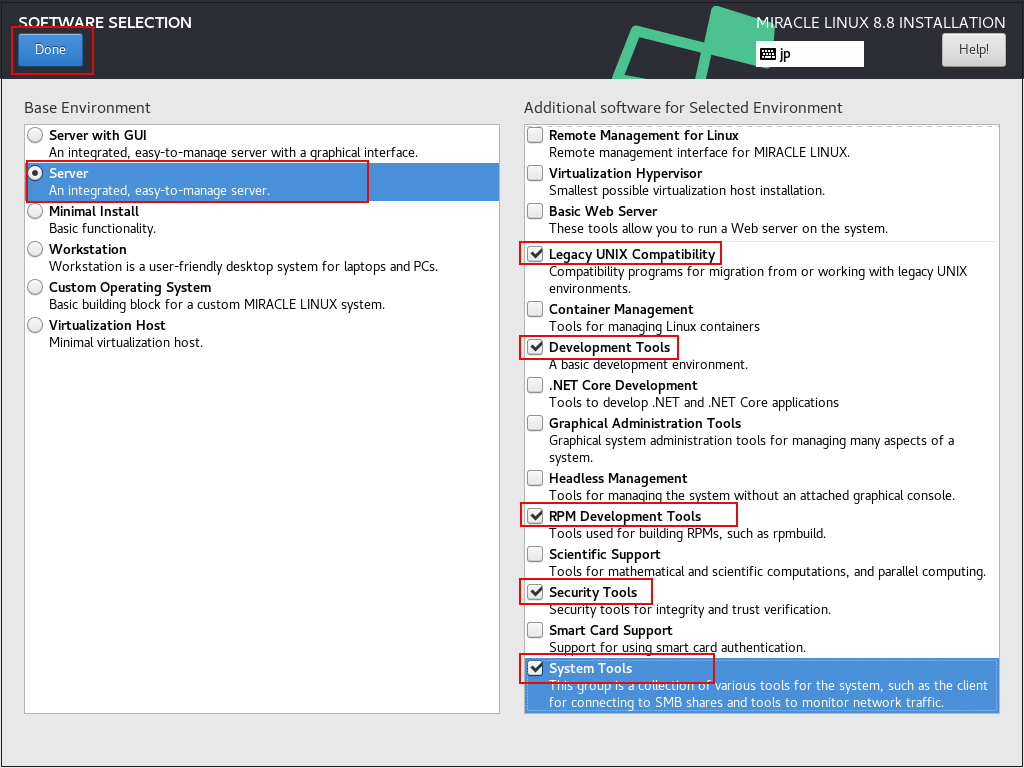
⑦Click on "Installtion Destination"
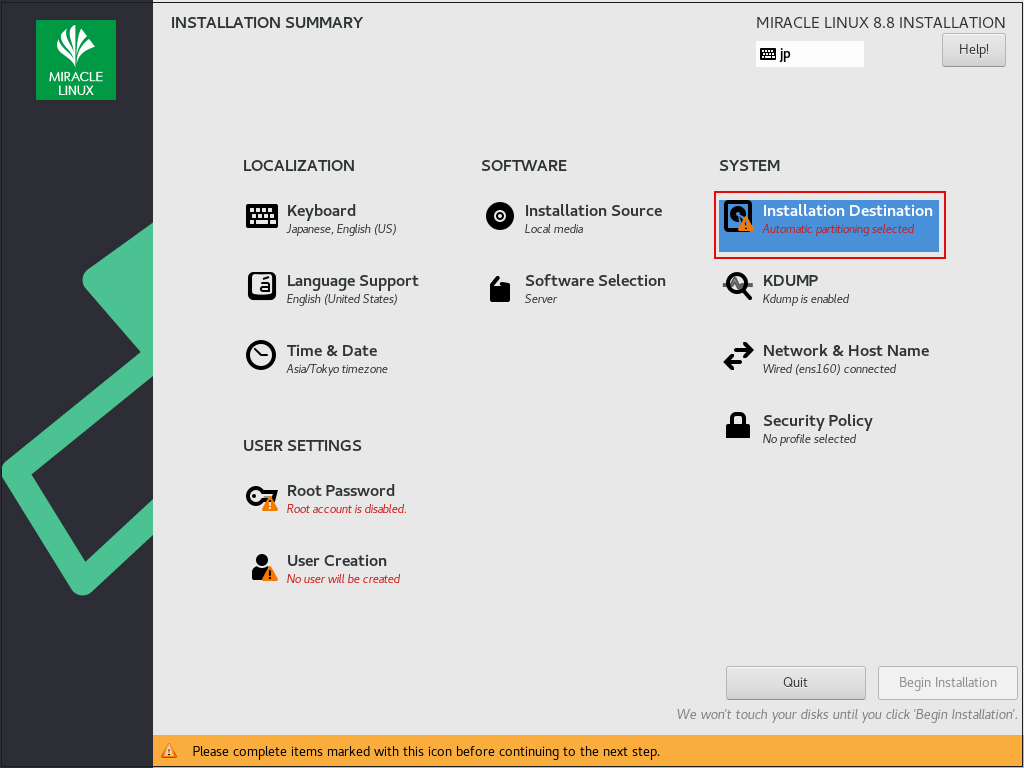
Set "Storage Configuration" to "Automatic" and click [Done]
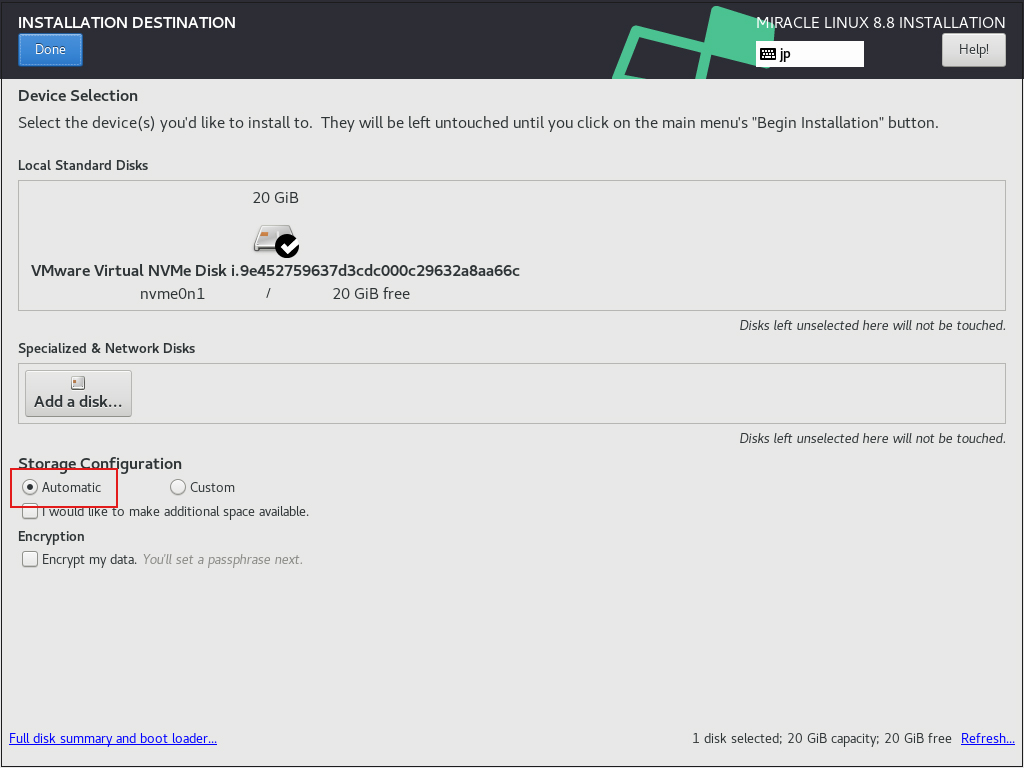
⑧Setting "Root Password"
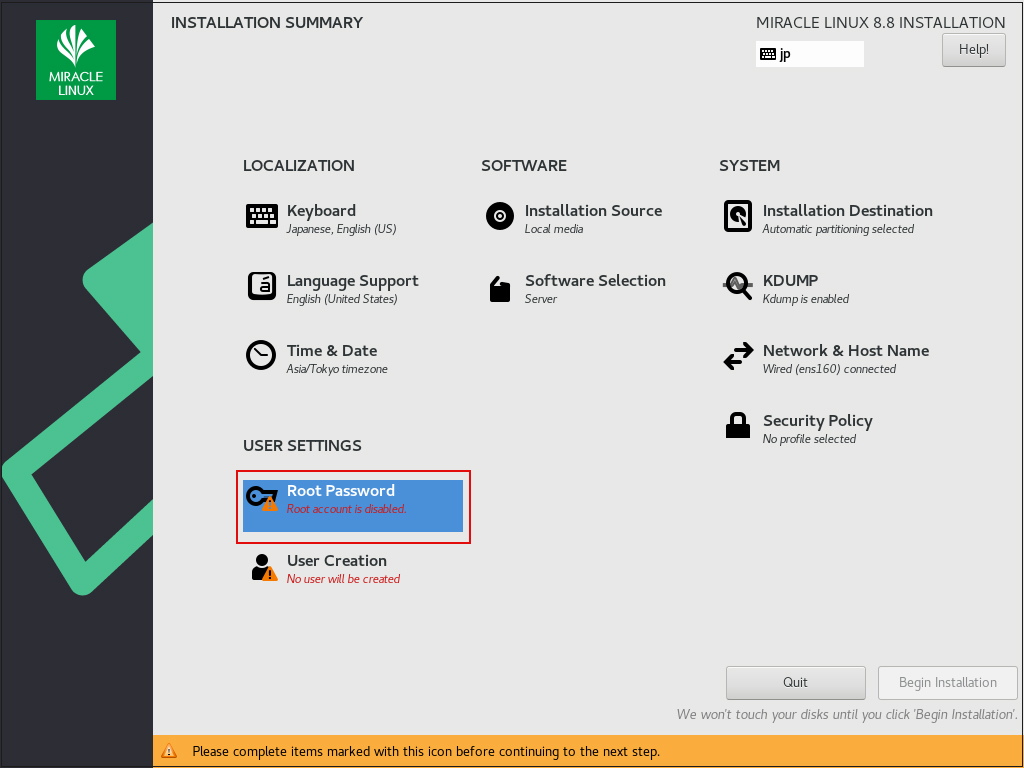
Enter root password and click [Done]
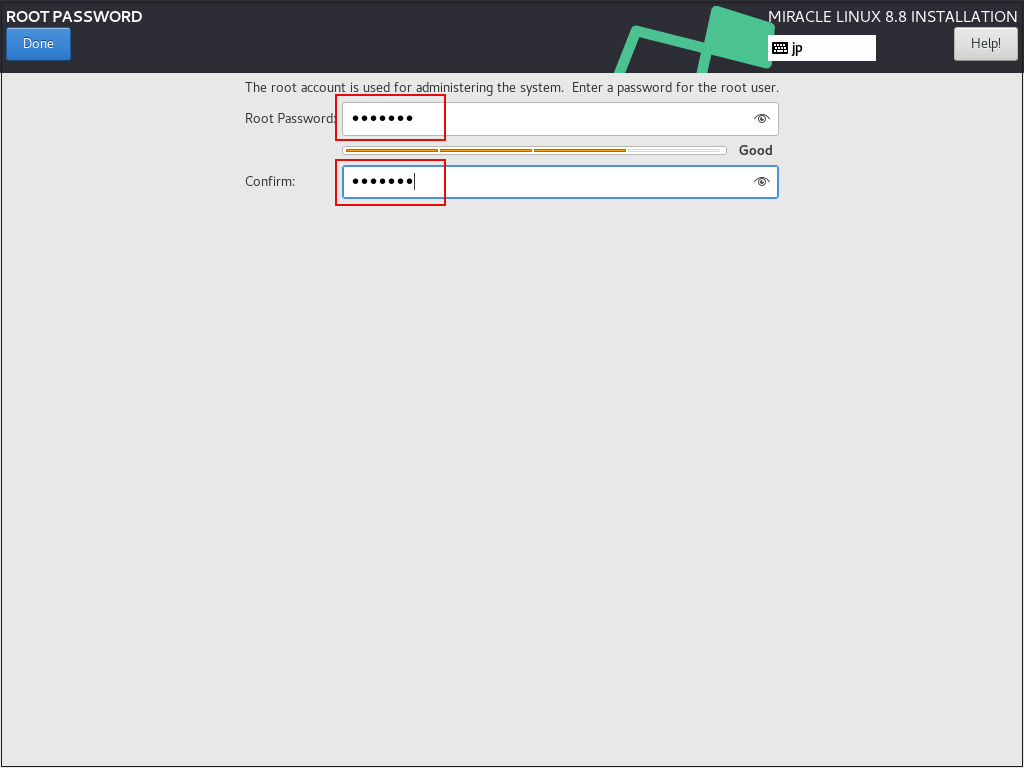
⑨User Creation" Create user and set password"
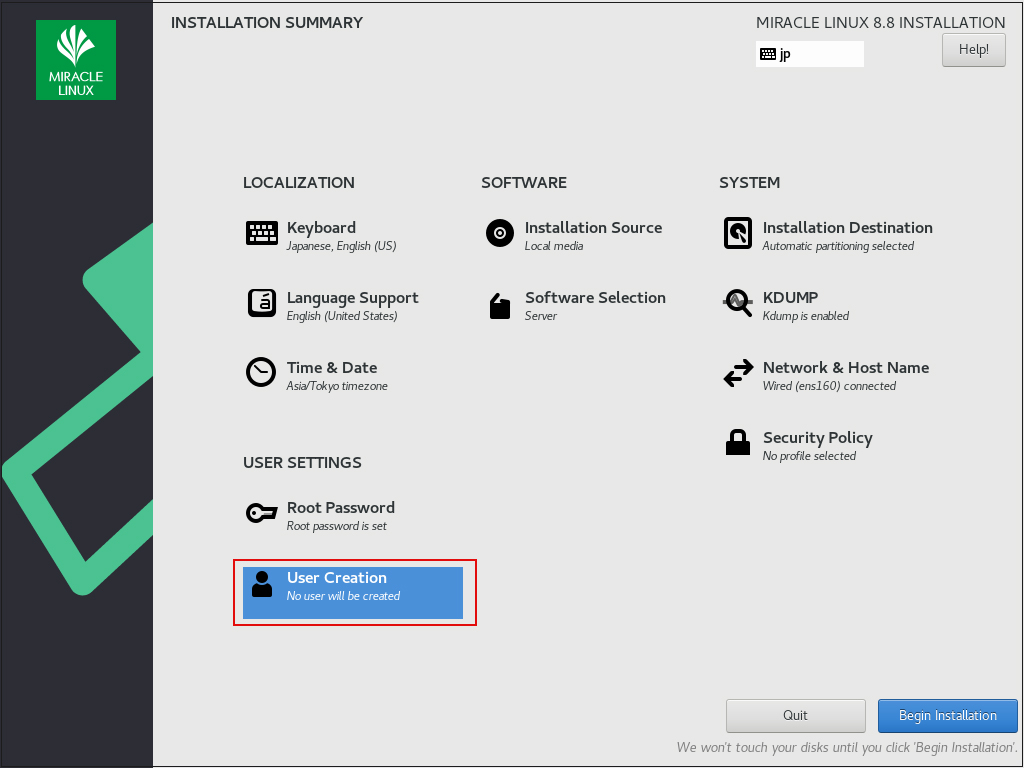
[Full name] Give any name to [User name] and check [Make this user administrator].
[Password] should be strong.
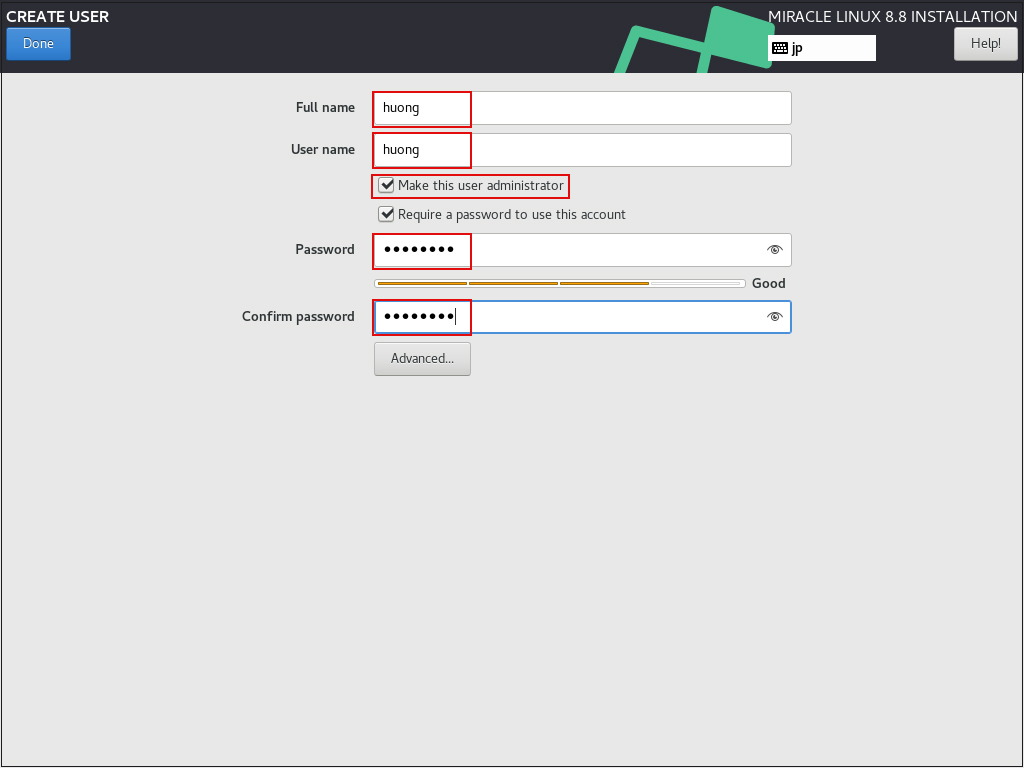
⑩Click "Begin Installation"
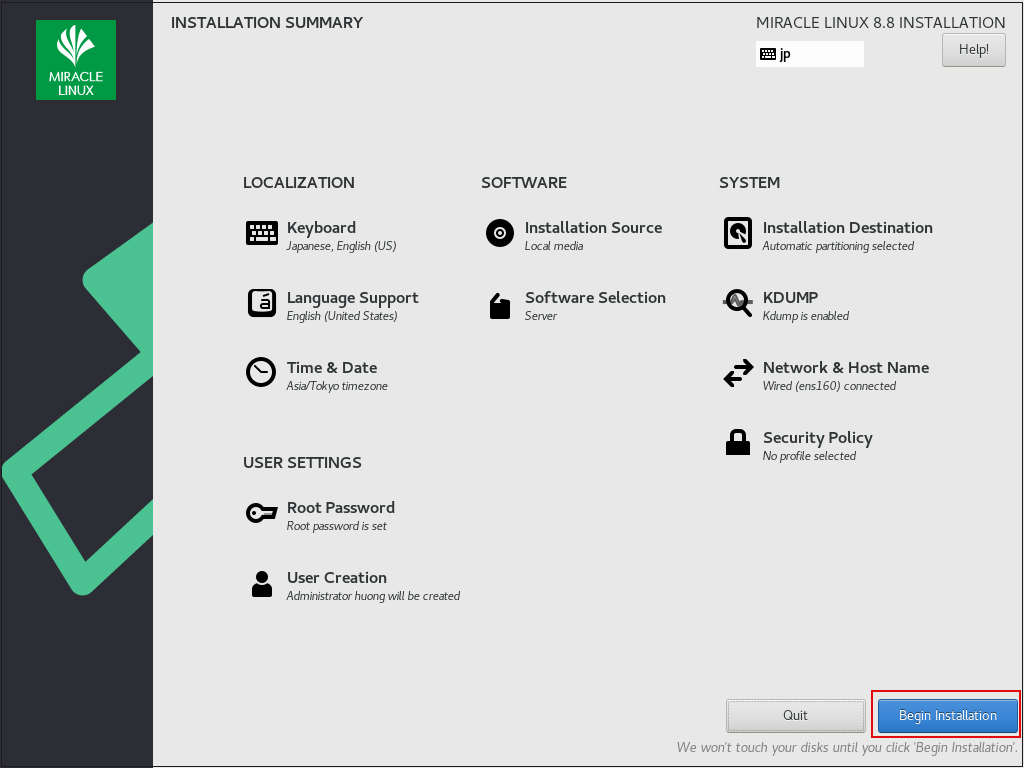
Installation begins
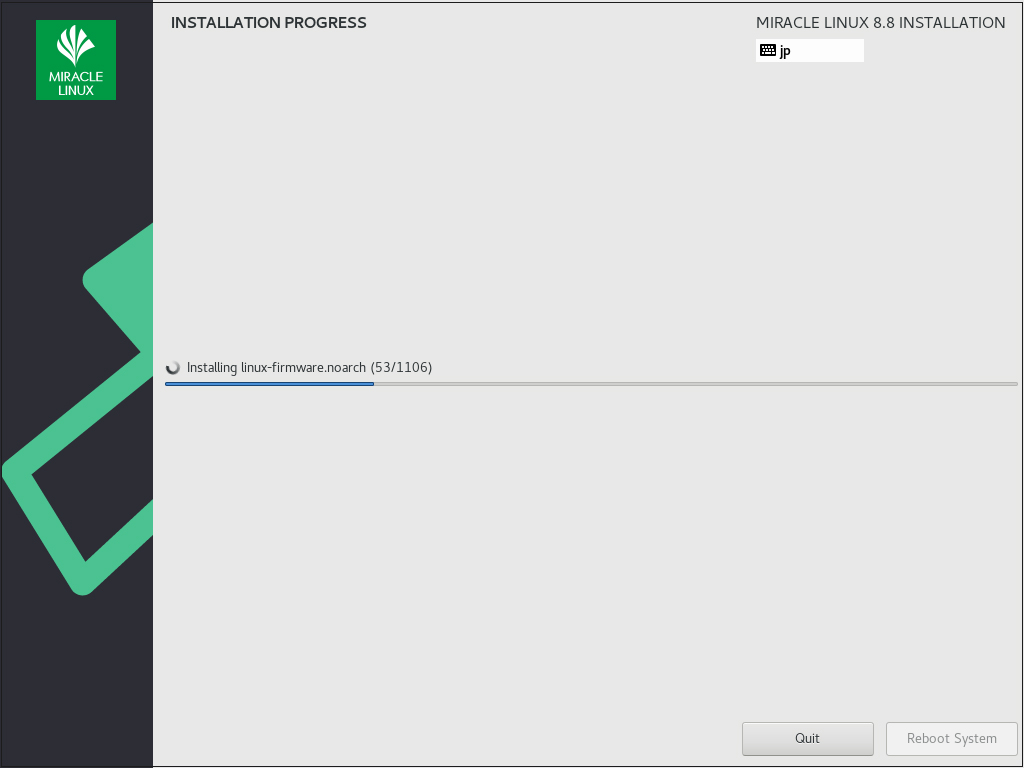
After installation is complete, click on [Reboot System]
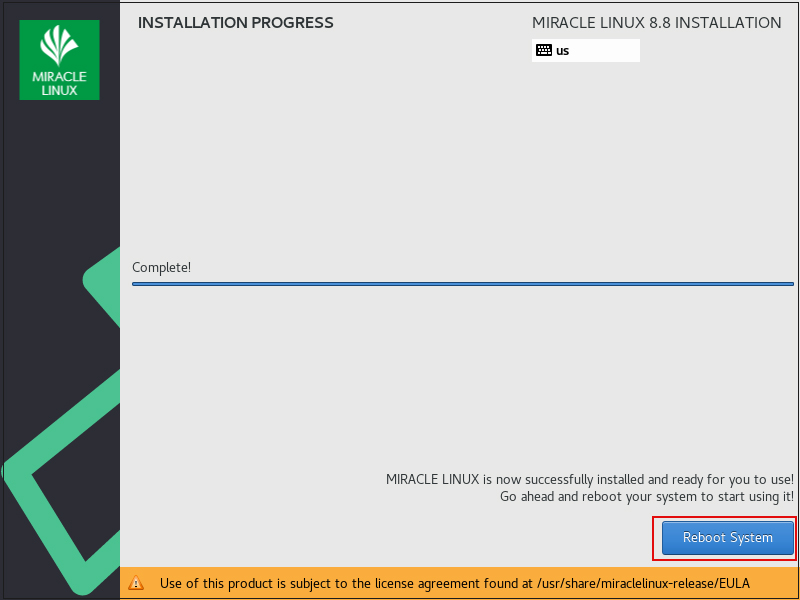
Reboot and you will be taken to the login screen
Log in with the user name and password of the general user you just created.
If you see the bash prompt "$", your login is complete.
